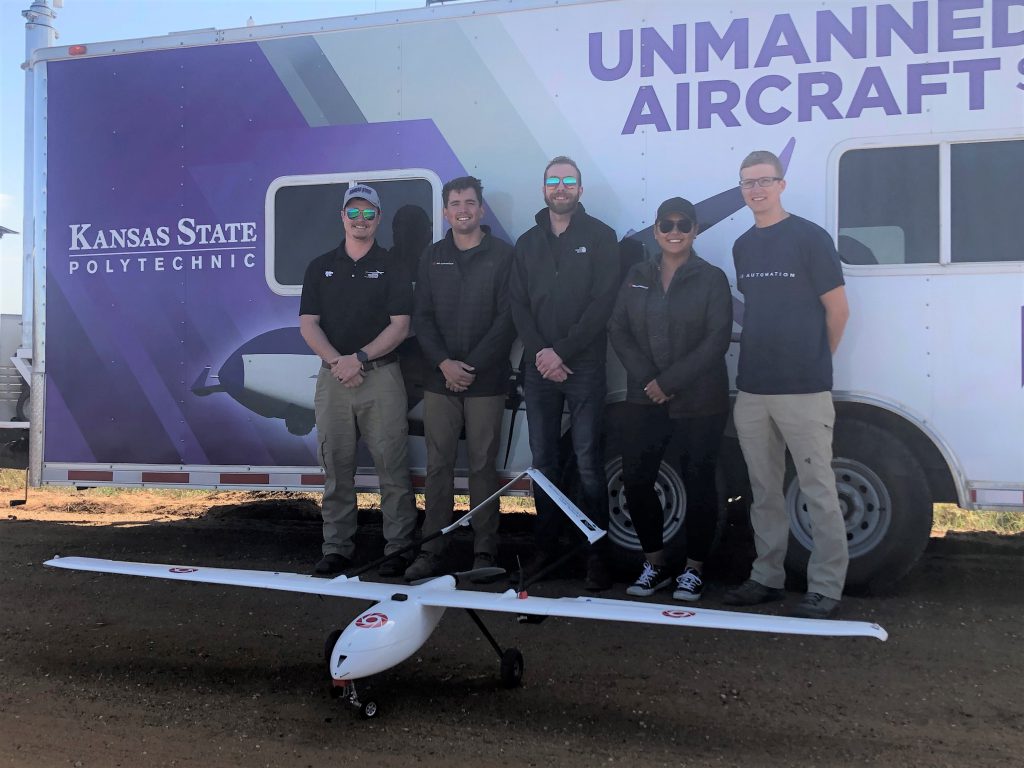How Iris enabled the first true BVLOS missions
by Gabrielle Wain, Head of Public Policy & Government Affairs

Recently, Iris Automation’s team of pilots traveled from Reno to rural Salina, Kansas to conduct field testing, a routine trip for them by now. But this time something monumental happened: they flew ‘true’ Beyond Visual Line of Sight (BVLOS). In partnership with Kansas State Polytechnic and the Kansas Department of Transportation, our team flew BVLOS for over 150 hours, mapping out electrical services company Evergy’s power lines, which stretch across the state and beyond.
What is this ‘true’ Beyond Visual Line of Sight, you ask? It is a mission in which a drone flies Beyond Line of Sight of its pilot—either further than the eye can see, or obstructed from sight in some way—using only technological means, rather than any human intervention, to stay safely separated from other aircraft. Until recently, all missions that required a drone to be out of the field of view of the pilot required a visual observer to track the drone and radio back to warn the pilot if another aircraft came into view.
Not anymore: for our mission in Kansas, we only used Casia, our onboard Detect and Avoid technology, after receiving permission to do so from the Federal Aviation Administration (FAA) under a waiver from Part 107 (small unmanned aircraft regulations) that allows us to fly BVLOS under certain circumstances, so long as Casia is onboard the drone.

This wasn’t the first time Casia has enabled a ‘true’ Beyond Visual Line of Sight mission. Back in August, our team traveled up to Alaska to support the University of Alaska-Fairbanks’ ACUASI team deliver a pipeline inspection mission for Alyeska Pipeline Service Company, in partnership with the high-endurance drone company Skyfront and radar technology company Echodyne. This mission was the first to prove that these operations could be flown without a human—even in a brand new environment that presented additional stressors and challenges on our system.
The word I have heard the most since we received these permissions is how, as in, how did we get these groundbreaking permissions? Like anything in aviation, there is no simple answer. Here’s my take on how we got there.
We took things step by step
Anyone who has worked with the FAA knows the phrase ‘Crawl, Walk, Run,’ their approach to any technological advancement or regulatory change. With both of these projects, we first meticulously demonstrated our technology’s performance and reliability. It involved multiple deployments of our Flight Operations team to Kansas and Alaska to fly demonstration missions to collect data, which was then rigorously processed and analyzed.
This methodical and rigorous approach is part of Iris’ DNA – it’s why our Flight Operations team in Reno, Nevada tests every element of our technology on daily, ‘real world’ missions, using a drone against a manned aircraft. And it’s why we built an in-house simulator to test our technology in thousands of simulated encounters between drone and manned aircraft which are too dangerous to replicate in real life.

We have the right technology
Iris’ Detect and Avoid technology is specifically designed to enable true BVLOS operations. We’re starting small in remote areas like rural Kansas and Alaska to demonstrate its capabilities and potential, with the ultimate goal of enabling BVLOS operations across any distance and in any location. Unlike most missions that require ground-based sensors to detect aircraft, our customers only need to equip the drones they are using for the mission with Casia. In addition to the extensive testing we conduct, our team of expert engineers continually build on its capabilities and features.
We partner with fantastic organizations
Iris’ Casia is a key enabling technology for any company who wants to improve the efficiency and safety of their operations by flying BVLOS. In Kansas and Alaska we have worked in partnership with bold, innovative and—most importantly—safety focused organizations and teams to demonstrate what flying true BVLOS really means to the world. We could not have achieved these monumental permissions without our partnerships with the FAA’s Integration Pilot Program projects in Kansas and Alaska, and, of course, with the FAA itself.

If you have a mission you’d like to fly ‘true’ Beyond Visual Line Of Sight and are aligned with the approach I’ve laid out above, please get in touch. Getting BVLOS permissions isn’t an easy path, but by taking things step by step, using the right technology, and working in partnership, it becomes far more achievable and moves us towards increased innovation and safety in our national airspace.
